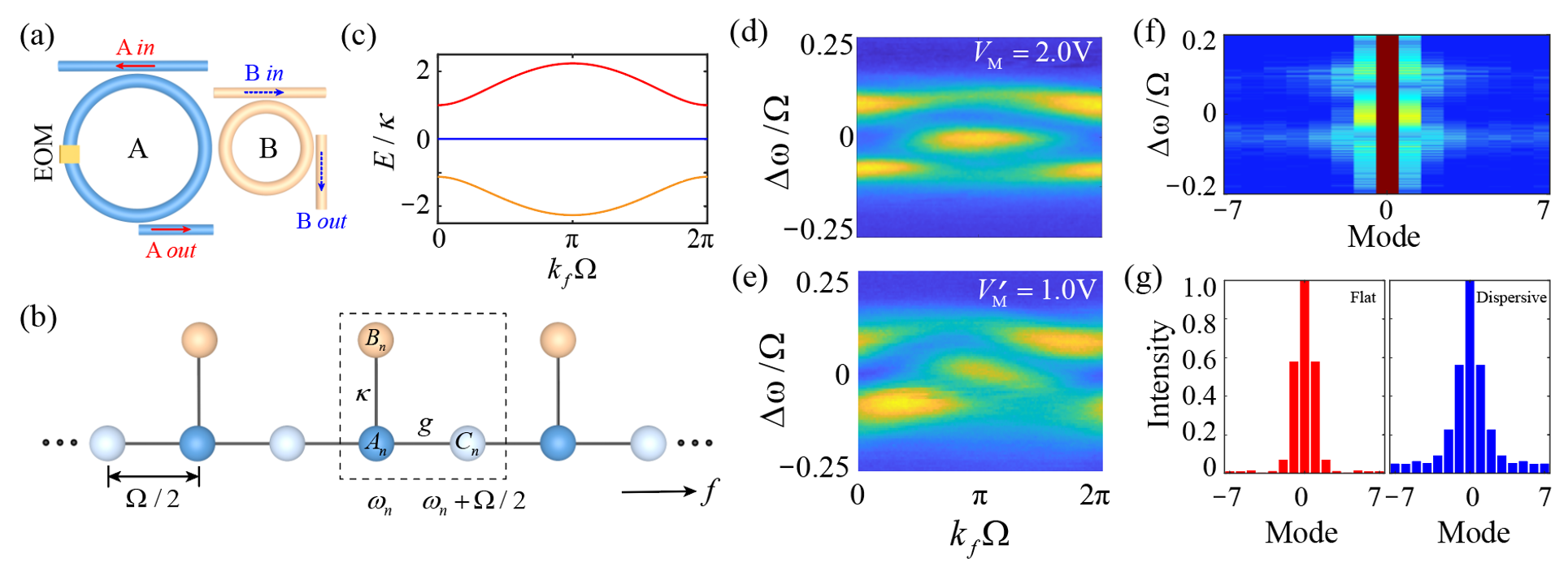
Time:2022-06-22 Read:1321
Synthetic dimension in photonics has exhibited the capability for applications in studying physical phenomena with exotic connectivities, exploring higher-dimensional physics in lower geometrical dimensionality, and manipulating light in multiple ways. Dynamically modulated ring resonator system, where resonant modes with equally spaced frequencies are coupled by the external modulation to construct the synthetic frequency dimension, can provide great experimental flexibility and reconfigurability. However, experimental implementations have only been demonstrated in single ring resonator or two identical types of ring resonators. The experimental feasibility of constructing a synthetic space in multiple rings is still questionable so far due to the synchronization problem in coupling different type of rings.
Here, we implement the experimental demonstration of generating the stub lattice along the frequency axis of light, realized in two coupled ring resonators of different lengths while the larger ring undergoing dynamic modulation. Such synthetic photonic structure naturally exhibits the physics of flat band. We show that the time-resolved band structure read out from the drop-port output of the excited ring is the intensity projection of the band structure onto specific resonant mode in the synthetic momentum space, where gapped flat band, mode localization effect, and flat to non-flat band transition are observed in experiments and verified by simulations. Our work gives a direct evidence for the constructing synthetic stub lattice using two different rings, which hence makes a solid step towards experimentally constructing more complicated lattices in multiple rings associated with synthetic frequency dimension.

Figure (a) Two coupled ring resonators. (b) The system in (a) can be mapped into a photonic stub lattice along the synthetic frequency dimension, with the corresponding band structure in (c). Experimental measurement of (d) the band structure as a function of the frequency detuning, and (e) the band structures by adding long-range coupling. (f) Experimentally observed mode spectra by sweeping the detuning of the input laser, while the mode distributions of two selected frequencies are in (g).
The research was published in “Guangzhen Li, Luojia Wang, Rui Ye, Shijie Liu, Yuanlin Zheng, Luqi Yuan, and Xianfeng Chen, Observation of flat-band and band transition in the synthetic space, Adv. Photon. 4(3), 036002 (2022)”.
Link: https://doi.org/10.1117/1.AP.4.3.036002